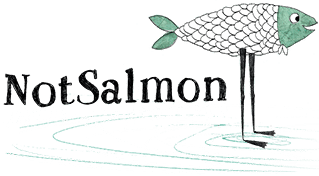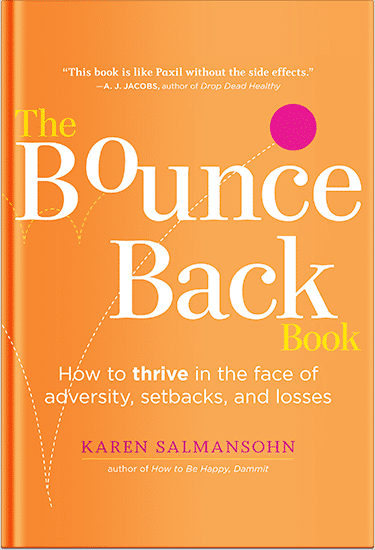 Buying a home is an exciting journey, but it’s also a significant financial commitment. Whether it’s your first time or you’re an experienced buyer, having a clear financial plan is critical for a smooth process. From saving for a down payment to understanding the closing costs, a well-structured checklist can help you navigate the steps with confidence.
Buying a home is an exciting journey, but it’s also a significant financial commitment. Whether it’s your first time or you’re an experienced buyer, having a clear financial plan is critical for a smooth process. From saving for a down payment to understanding the closing costs, a well-structured checklist can help you navigate the steps with confidence.
In this article, we’ll walk you through the essential financial steps you need to take to ensure a successful home buying experience. With careful preparation and informed decisions, you’ll be on your way to owning a home without any major financial surprises.
1. Establish Your Home Buying Budget
Before you even start looking at homes, it’s crucial to determine how much you can afford. This will help you narrow down your options and prevent wasting time on properties outside of your financial reach. Several factors come into play when setting your budget:
Understanding Your Income and Expenses
Start by evaluating your monthly income and monthly expenses. A good rule of thumb is that your monthly mortgage payment should not exceed 28-30% of your gross monthly income. Don’t forget to account for other ongoing costs, like property taxes, homeowners insurance, and maintenance fees, which can quickly add up.
Setting Aside Money for a Down Payment
A down payment is usually required when purchasing a home. Traditionally, a down payment is 20% of the purchase price. However, depending on the loan type, this percentage can vary. Some loans may only require 3-5%, especially for first-time homebuyers. The more you can put down upfront, the less you’ll have to borrow, and the better terms you’ll likely secure.
It’s important to start saving as soon as possible for your down payment. If you’re aiming for a 20% down payment, creating a savings plan is key. If you’re unsure where to start, use an online down payment calculator to set a target amount based on your desired price range.
Don’t Forget About Closing Costs
In addition to the down payment, closing costs are another expense to keep in mind. These costs usually range between 2-5% of the home’s purchase price and include fees for loan origination, title insurance, appraisal, inspections, and legal costs. Factor these into your budget early to avoid any unpleasant surprises when the time comes to close on your new home.
2. Get Pre-Approved for a Mortgage
Before you start browsing listings, it’s wise to get pre-approved for a mortgage. A pre-approval letter from a lender gives you a clear idea of how much you can borrow, and it shows sellers that you’re a serious buyer. Getting pre-approved involves providing a lender with your financial details, including your income, debts, and assets. They’ll use this information to determine the loan amount you qualify for.
When you’re pre-approved, you can shop for homes with confidence, knowing exactly how much you can spend. It also helps streamline the buying process since you’ve already done the legwork. With mortgage rates constantly fluctuating, being pre-approved can save you time and give you the leverage to act fast when you find the right home.
3. Plan for Other Costs Involved in Buying a Home
While saving for a down payment is crucial, there are other financial aspects to consider that will play a role in your home-buying journey. These include:
Home Inspections and Appraisals
Once you’ve found the right property, you’ll need to budget for home inspections and appraisals. Inspections are essential for identifying potential issues with the home, such as structural problems or outdated systems. If any issues are uncovered, you may need to negotiate the price or request repairs before moving forward.
An appraisal is necessary for the lender to confirm the home’s value. If the home’s value is lower than the agreed-upon purchase price, you may have to renegotiate the deal or come up with the difference in cash.
Homeowners Insurance
Lenders typically require that you have homeowners insurance to protect your property. This insurance covers damage to the home due to fire, theft, or natural disasters. It’s essential to get a few quotes from different providers to find the best rate. The cost of homeowners insurance can vary based on the home’s location, size, and the level of coverage you select.
Moving Costs
Once your offer is accepted, you’ll need to budget for moving expenses. Whether you’re renting a truck, hiring professional movers, or using a combination of both, moving can be costly. Consider packing materials, storage, and any potential moving services you’ll need during the transition.
4. Consider Your Loan Options
There are several types of mortgages available, each with its advantages and disadvantages. It’s important to choose a mortgage type that fits your financial situation and long-term goals. The main types of loans include:
Conventional Loans
These loans are not backed by the government and typically require a higher credit score and larger down payment. However, they tend to offer better terms and lower rates for borrowers with good credit.
FHA Loans
A Federal Housing Administration (FHA) loan is a government-backed loan designed for first-time homebuyers or those with less-than-perfect credit. These loans often require a smaller down payment (as low as 3.5%) but may have higher insurance premiums and interest rates.
VA Loans
If you’re a military veteran or an active service member, a VA loan could be a great option. These loans offer favorable terms, including no down payment requirement and lower interest rates, but they are only available to qualified individuals.
USDA Loans
The U.S. Department of Agriculture offers loans for homes in rural areas. These loans typically require no down payment, but the home must meet certain location and condition requirements.
5. Understand Your Mortgage Interest Rate
The interest rate on your mortgage will have a significant impact on your monthly payments and the total cost of the loan over time. Rates can vary depending on the type of loan, your credit score, and the loan term. You may also have the option to choose between a fixed-rate mortgage and an adjustable-rate mortgage (ARM).
- Fixed-rate mortgages have the same interest rate for the life of the loan, providing predictability and stability.
- Adjustable-rate mortgages (ARMs) have interest rates that can change over time, typically after an initial fixed-rate period.
Before deciding, consider the pros and cons of each type of loan based on your financial situation. Locking in a lower rate early on can save you thousands in the long run.
6. Review Your Credit Score
Your credit score plays a vital role in determining the mortgage rate you will receive. A higher credit score generally leads to lower interest rates, meaning you’ll pay less over the life of the loan. Before applying for a mortgage, check your credit score and take steps to improve it if necessary.
If your credit score is less than ideal, consider paying down existing debt or disputing any errors on your credit report. Even small improvements in your score can result in significant savings on your mortgage.
7. Finalizing the Deal: The Closing Process
Once you’ve gone through the necessary steps, it’s time for the closing process. During this stage, all parties involved—buyers, sellers, agents, and lenders—finalize the sale. The buyer typically signs a lot of paperwork, including the mortgage agreement, while the seller completes their part of the transaction.
At closing, you’ll pay the remaining balance of your down payment, as well as any closing costs. Once everything is signed and finalized, the home is officially yours!
Conclusion
Buying a home is one of the largest financial decisions most people make. By following this checklist, you can ensure that you’re financially prepared for every stage of the process, from saving for your down payment to closing on your new home. Each step plays a key role in your home buying journey, so take the time to plan carefully, budget wisely, and make informed decisions along the way. With proper preparation, the dream of homeownership can become a reality.
P.S. Before you zip off to your next Internet pit stop, check out these 2 game changers below - that could dramatically upscale your life.
1. Check Out My Book On Enjoying A Well-Lived Life: It’s called "Your To Die For Life: How to Maximize Joy and Minimize Regret Before Your Time Runs Out." Think of it as your life’s manual to cranking up the volume on joy, meaning, and connection. Learn more here.
2. Life Review Therapy - What if you could get a clear picture of where you are versus where you want to be, and find out exactly why you’re not there yet? That’s what Life Review Therapy is all about.. If you’re serious about transforming your life, let’s talk. Learn more HERE.
Think happier. Think calmer.
Think about subscribing for free weekly tools here.
No SPAM, ever! Read the Privacy Policy for more information.
One last step!
Please go to your inbox and click the confirmation link we just emailed you so you can start to get your free weekly NotSalmon Happiness Tools! Plus, you’ll immediately receive a chunklette of Karen’s bestselling Bounce Back Book!


 Buying a home is an exciting journey, but it’s also a significant financial commitment. Whether it’s your first time or you’re an experienced buyer, having a clear financial plan is critical for a smooth process. From saving for a down payment to understanding the closing costs, a well-structured checklist can help you navigate the steps with confidence.
Buying a home is an exciting journey, but it’s also a significant financial commitment. Whether it’s your first time or you’re an experienced buyer, having a clear financial plan is critical for a smooth process. From saving for a down payment to understanding the closing costs, a well-structured checklist can help you navigate the steps with confidence.